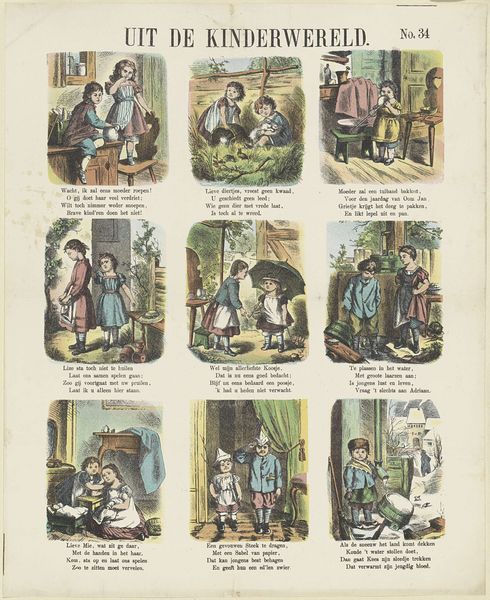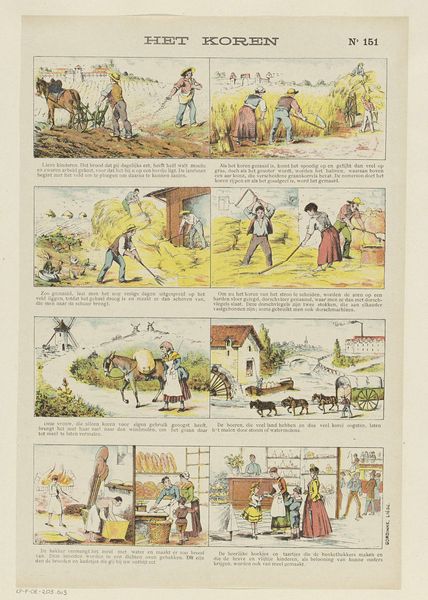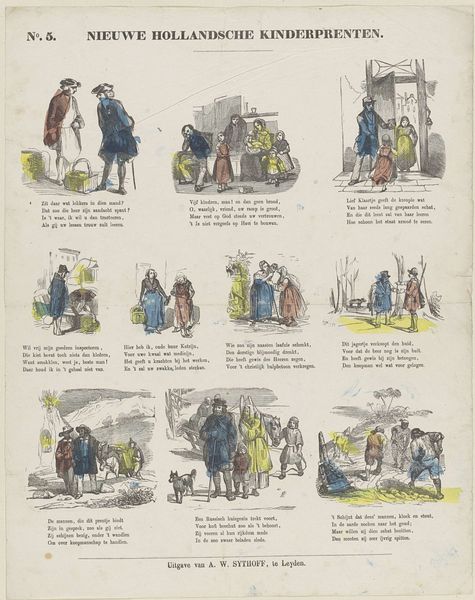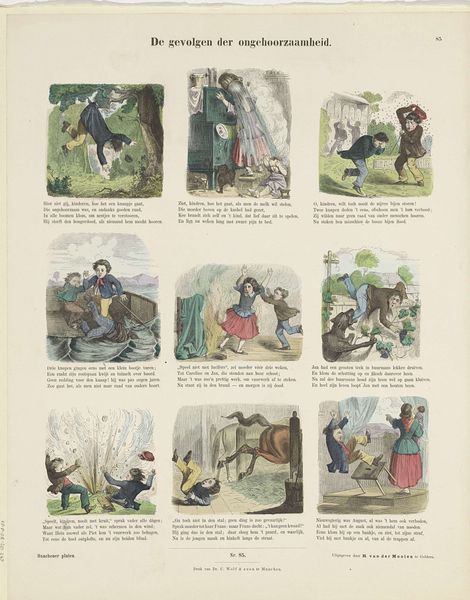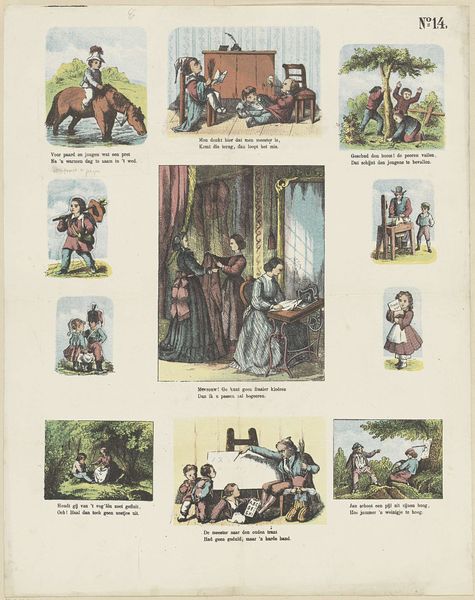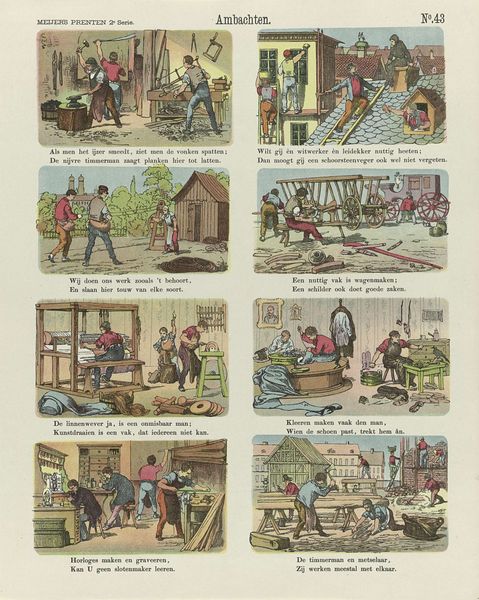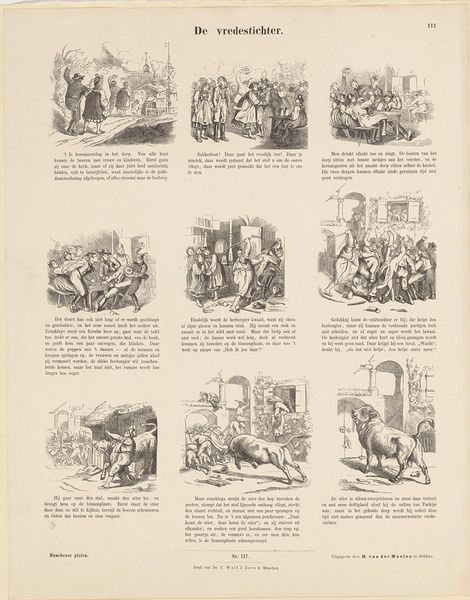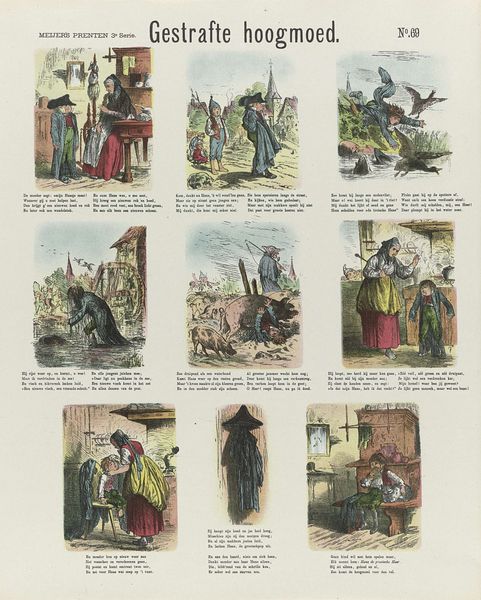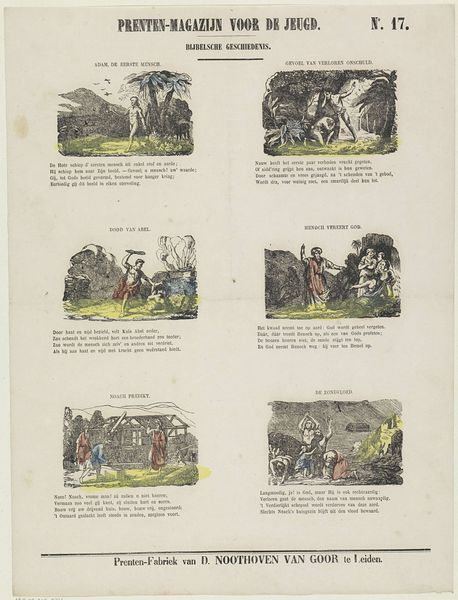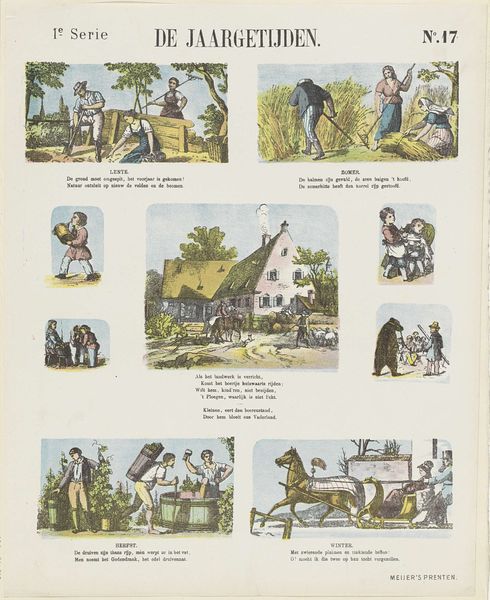
lithograph, print
#
comic strip sketch
#
page thumbnail
#
narrative-art
#
lithograph
# print
#
sketch book
#
traditional media
#
personal sketchbook
#
sketchwork
#
journal
#
folk-art
#
sketchbook drawing
#
genre-painting
#
storyboard and sketchbook work
#
sketchbook art
Dimensions: height 430 mm, width 344 mm
Copyright: Rijks Museum: Open Domain
Editor: This is "Willem en Anna," a lithograph print from 1873 by De Ruyter & Meijer. It reminds me of an early comic strip with its sequential scenes. It seems to depict a narrative. What kind of story do you think it is telling? Curator: Considering its period, it likely taps into prevailing cultural values about childhood and family. The scenes suggest a narrative, probably aimed at a young audience. See how the idealized domestic settings and implied moral lessons point towards reinforcing social norms of the time? The artist may want the kids to have good manors! Editor: Social norms? What specific norms are being shown here, or encouraged? Curator: Note the clear distinctions in gender roles, visible in the imagery. The mother figure is often depicted in domestic environments. I think we see social expectations for children to behave appropriately and respect authority, mirroring Victorian-era values emphasizing order and discipline. The location would determine just what norms and expectations were common or expected! Editor: So, it's not just a story, it's a cultural lesson, packaged in print form. Curator: Precisely! The printing process democratized art; It's meant to teach lessons beyond entertainment. The narrative is easily accessible and broadly distributed, amplifying its social impact. Consider it a reflection of societal values being actively circulated and reinforced. Editor: It’s amazing to see how art, even something that looks like a simple story, can be so deeply connected to the history and values of its time. I'll never see prints the same way again. Curator: And I see once again how art becomes meaningful only through our interpretation of socio-historical circumstances. It's been a rewarding look together!
Comments
No comments
Be the first to comment and join the conversation on the ultimate creative platform.

